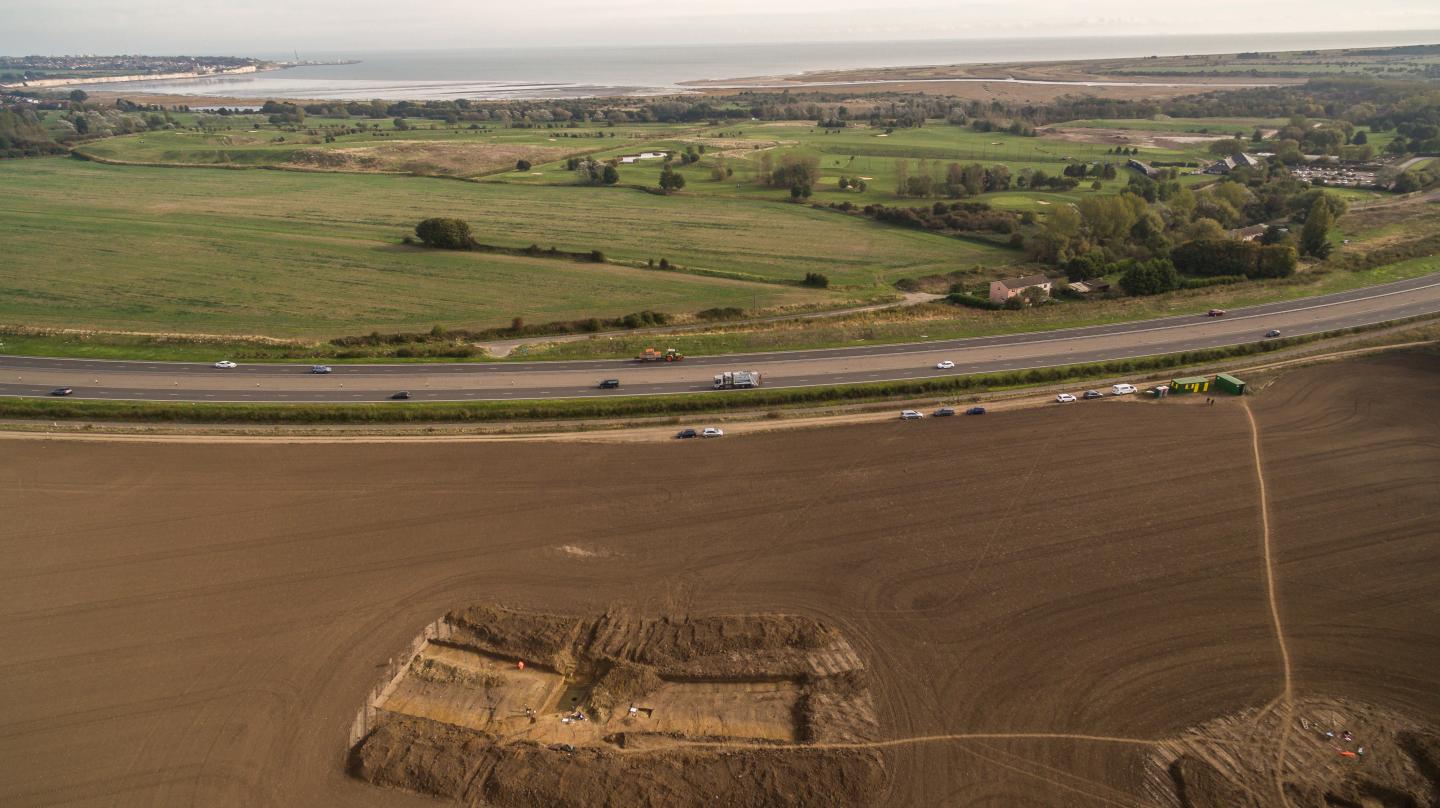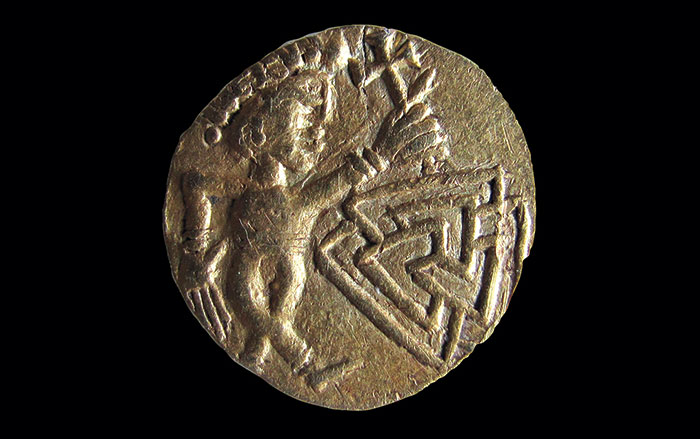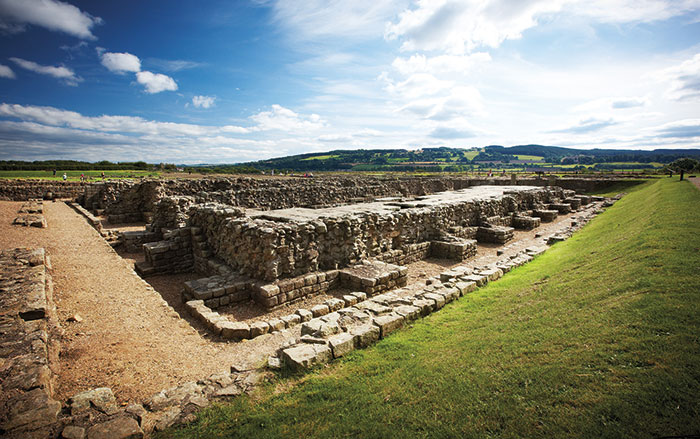
KENT, ENGLAND—According to a report in The Guardian, a team of archaeologists from the University of Leicester say a defensive ditch found on the southeastern tip of England may have been left behind by Julius Caesar’s invasion of Britain in 54 B.C. The ditch measures about 16 feet wide, and resembles first-century B.C. Roman defenses uncovered in France. The researchers also uncovered iron weapons, including a Roman javelin, and human bones bearing injuries. The site, located near the open sandy shore of Pegwell Bay, probably included a fort and served to protect Caesar’s 800 Roman ships. “The main purpose of the site is to defend the fleet,” said researcher Andrew Fitzpatrick. Caesar wrote that the ships were drawn onto the beach for repairs after they were damaged during a storm. Scholars had not thought Pegwell Bay a viable land site for the Romans, since it is separated from the mainland. But Fitzpatrick notes that Roman engineers could have overcome the barrier created by Wantsum Channel. “This was the beginning of the permanent Roman occupation of Britain,” explained team member Colin Haselgrove. For more, go to “Caesar’s Diplomatic Breakdown.”










